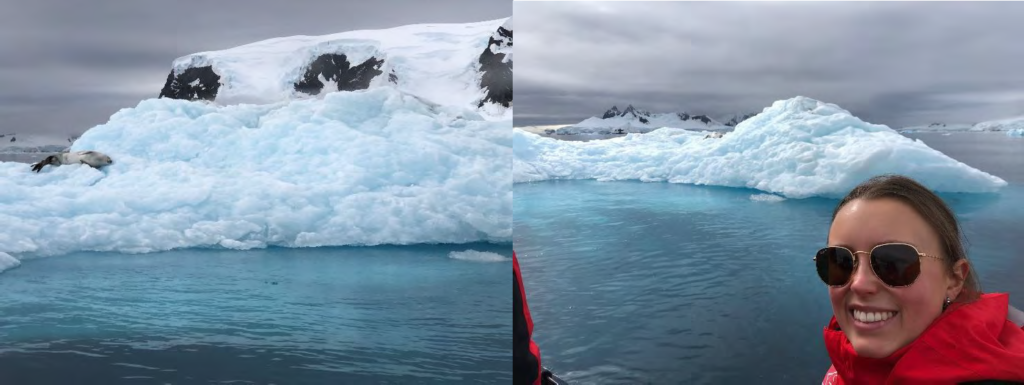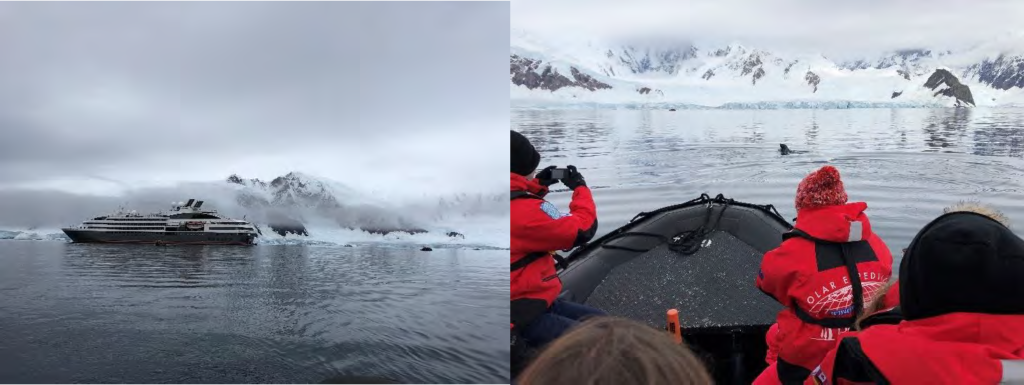The Antarctica Diaries – Day 4 – Enterprise Island & Wilhelmina Bay
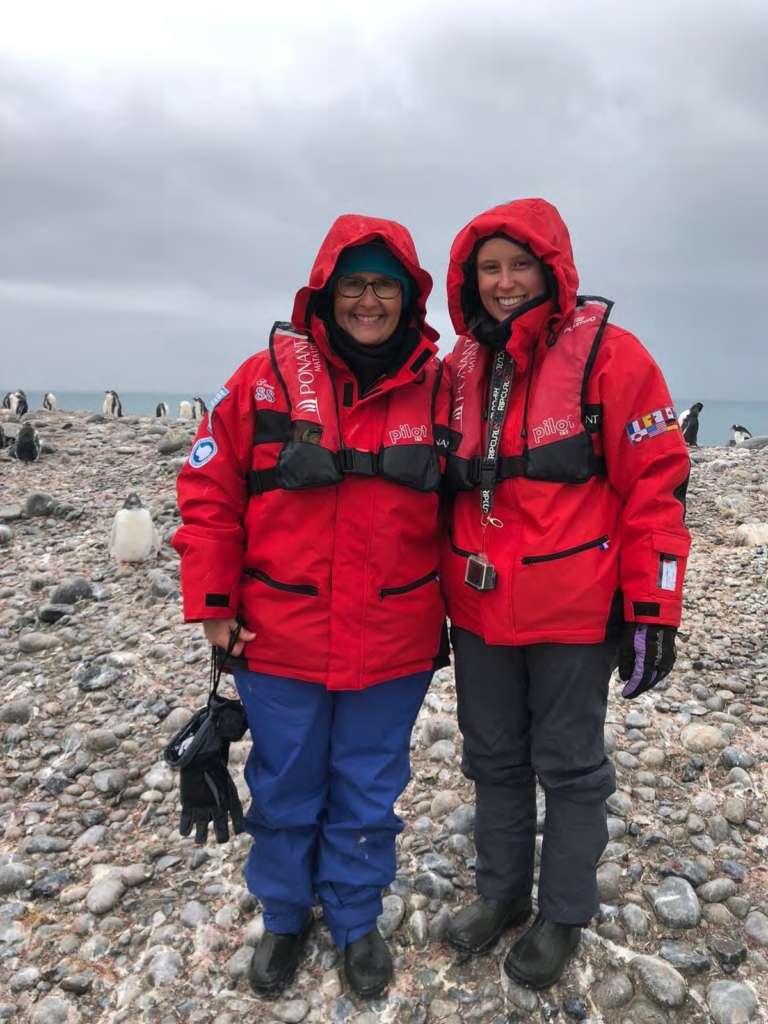
by Deb Corbett – Commercial Director Asia Pacific – Ponant Cruises
Deb Corbett is one of our favourite industry professionals. She recently returned from an expedition cruise to Antarctica with her sister Annie. Deb recounts us on her personal cruise experience in February 2020 to Antarctica aboard Ponant’s L’Austral. We will be posting each day’s journal over the next few weeks.
Wednesday 12 February 2020 – ENTERPRISE ISLAND & WILHELMINA BAY
It’s 1 degree today with a wind speed of 32km/h – another glorious day. This is our first official day of the expedition itinerary set by the Captain and Expedition Leader. Two zodiac cruises are planned. One in the morning and the second in the afternoon and it goes like clockwork.
Enterprise Island is the second largest island in the Possession Islands in East Antarctica where there is a large colony of Adelie penguins. Wilhemina Bay is 24km wide and was discovered by Belgian Antarctic Expedition of 1897-99 led by Adrien de Garlache whose descendants were on the ship so there was much excitement today heading out. The bay is named after Wilhelmina, Queen of the Netherlands, who made a major contribution to the expedition of the first wintering in Antarctica. Wilhelmina Bay is dubbed “Whale-mina Bay” for its large number of humpback whales and it doesn’t disappoint as they are out feeding and resting.
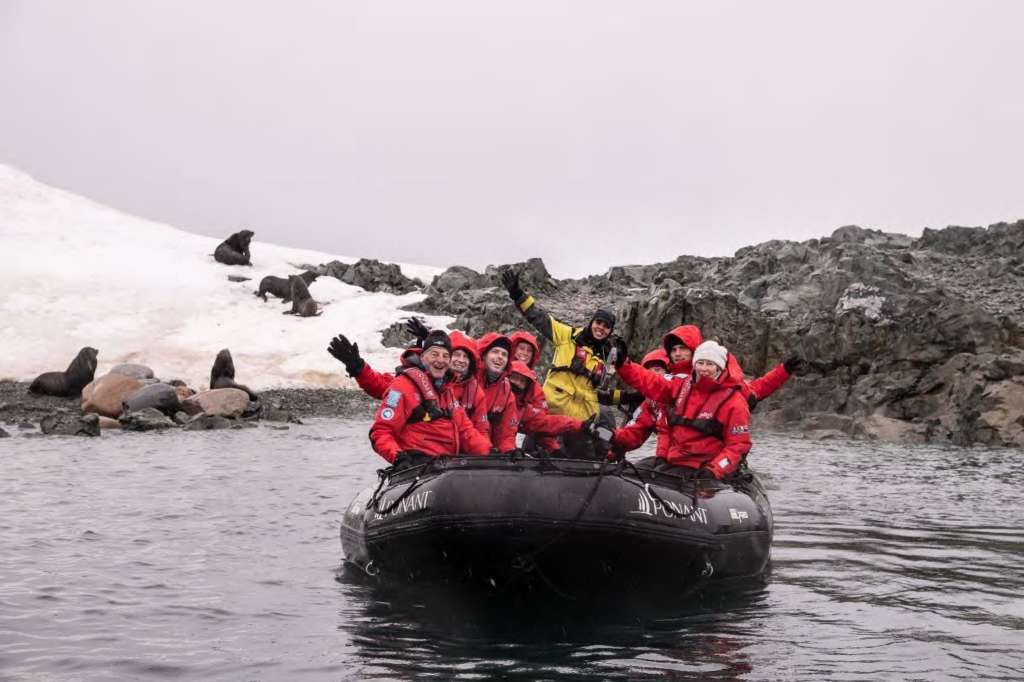
The bay is surrounded by steep cliffs full of snow and glaciers. An almost perfect pyramid-shape peak towers over the water. The scientists are out in their zodiac and record their first data of sound & also obtain some samples of whale blubber.
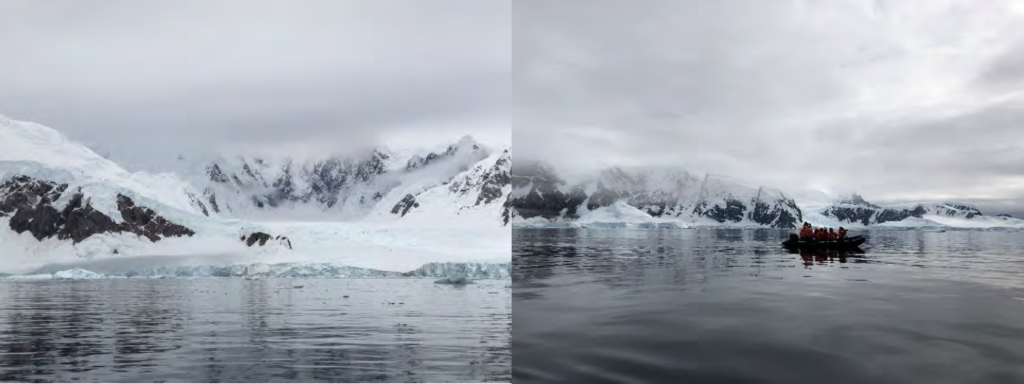
We then see what looks to be an unusual jelly-fish in the water and ask Suzie, our guide for the day, if they are dangerous and sting. Suzie says no they are “Salp” – not dangerous and they don’t sting as they don’t have tentacles. The pink dot in the middle of the Salp is its stomach. The Salp connect to each other to make long trains. Over the past seasons Suzie has noticed that the Salp has increased in numbers which is concerning as they eat Plankton which is what the Whales eat. She says that Salp are not nutritious for the whales as 95% of the Salp are made up of water so they are not an attractive food source for whales or seals.
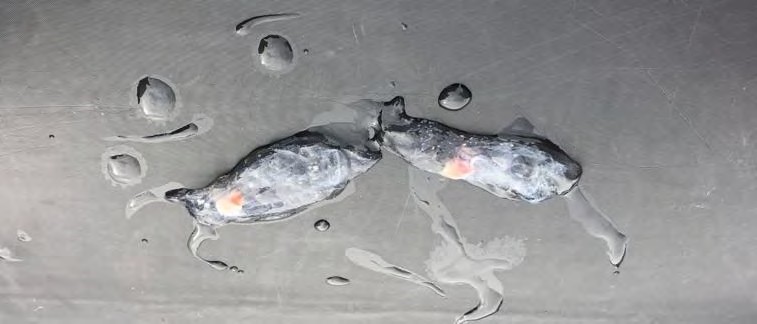
We continue on our outing and sight our first seal and ice bergs up close.
Each night before dinner we recap about the day with the expedition leader and guides and get a briefing about the next day’s activities.
Stay tuned for next week’s installment: Day 5 – Dorian Bay & Paradise Bay


